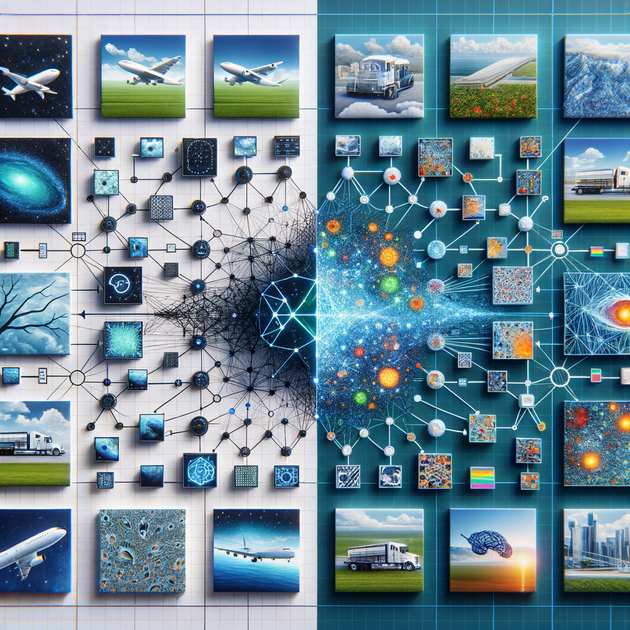Unveiling the Battle: ANN vs CNN on CIFAR-10 – A Deep Dive Analysis
Have you ever wondered which neural network model reigns supreme for image classification tasks? In this post, we embark on an exciting journey comparing Artificial Neural Networks (ANNs) and Convolutional Neural Networks (CNNs) using the well-known CIFAR-10 dataset. We’ll break down the core concepts, architectural differences, and real-world implications of ANNs and CNNs. By the end of this article, you’ll have a clear understanding of which model excels for image classification and why. Let’s dive in!
Dataset Overview
The CIFAR-10 dataset is a staple in the machine learning community for benchmarking models on image recognition tasks. It consists of 60,000 32×32 color images divided into 10 distinct classes: airplanes, cars, birds, cats, deer, dogs, frogs, horses, ships, and trucks. The dataset is split into 50,000 training images and 10,000 test images. We’ll be using this dataset to compare the performance of ANNs and CNNs.

Understanding Artificial Neural Networks (ANNs)
What is ANN?
Artificial Neural Networks (ANNs) are inspired by the biological neural networks in our brains. They consist of interconnected layers of artificial neurons (nodes) that process information by passing signals through the network. ANNs are versatile and can be used for various tasks such as classification, regression, and pattern recognition.
Core Principles of ANN
- Layers: ANNs comprise input, hidden, and output layers.
- Neurons: Each layer contains multiple neurons that process inputs and deliver outputs.
- Activation Functions: Functions like ReLU or Sigmoid add non-linearity, enabling the network to learn intricate patterns.
- Backpropagation: The learning process involves adjusting weights based on the error gradient.

ANN Architecture
ANN = models.Sequential([
layers.Flatten(input_shape=(32, 32, 3)),
layers.Dense(3000, activation='relu'),
layers.Dense(1000, activation='relu'),
layers.Dense(10, activation='sigmoid')
])
ANN.compile(optimizer='adam', loss='sparse_categorical_crossentropy', metrics=['accuracy'])
Delving into Convolutional Neural Networks (CNNs)
What is CNN?
Convolutional Neural Networks (CNNs) are a specialized type of ANNs optimized for processing structured grid data, such as images. They are particularly adept at tasks involving spatial hierarchies, making them highly effective for image classification and object detection.
Core Principles of CNN
- Convolutional Layers: These layers apply convolutional filters to the input data to extract features.
- Pooling Layers: Pooling layers reduce the spatial dimensions, retaining critical information while lowering computational load.
- Fully Connected Layers: These layers are used after convolutional and pooling layers to make the final predictions.

CNN Architecture
CNN = models.Sequential([
layers.Conv2D(input_shape=(32, 32, 3), filters=32, kernel_size=(3, 3), activation='relu'),
layers.MaxPooling2D((2, 2)),
layers.Conv2D(filters=64, kernel_size=(3, 3), activation='relu'),
layers.MaxPooling2D((2, 2)),
layers.Flatten(),
layers.Dense(2000, activation='relu'),
layers.Dense(1000, activation='relu'),
layers.Dense(10, activation='softmax')
])
CNN.compile(optimizer='adam', loss='sparse_categorical_crossentropy', metrics=['accuracy'])
Training and Evaluation
Both models were trained for 10 epochs on the CIFAR-10 dataset. The ANN model relies on dense layers, making it simpler and more suitable for general tasks. Conversely, the CNN model leverages convolutional and pooling layers, optimizing it for image data.
ANN.fit(X_train, y_train, epochs=10)
ANN.evaluate(X_test, y_test)
CNN.fit(X_train, y_train, epochs=10)
CNN.evaluate(X_test, y_test)


Results Comparison
The evaluation results show the accuracy and loss for both models on the test data.
ANN Evaluation
- Accuracy: 0.4960
- Loss: 1.4678

CNN Evaluation
- Accuracy: 0.7032
- Loss: 0.8321

As evident, the CNN significantly outperforms the ANN in both accuracy and loss.
Detailed Performance Metrics
To get a better grasp of the models’ performance, we generated confusion matrices and classification reports.
ANN Confusion Matrix and Report
y_pred_ann = ANN.predict(X_test)
y_pred_labels_ann = [np.argmax(i) for i in y_pred_ann]
plot_confusion_matrix(y_test, y_pred_labels_ann, "Confusion Matrix for ANN")
print("Classification Report for ANN:")
print(classification_report(y_test, y_pred_labels_ann))

CNN Confusion Matrix and Report
y_pred_cnn = CNN.predict(X_test)
y_pred_labels_cnn = [np.argmax(i) for i in y_pred_cnn]
plot_confusion_matrix(y_test, y_pred_labels_cnn, "Confusion Matrix for CNN")
print("Classification Report for CNN:")
print(classification_report(y_test, y_pred_labels_cnn))

The Verdict
In the race for image classification supremacy, CNNs leap ahead of ANNs on the CIFAR-10 dataset due to their inherent capability to capture spatial hierarchies and local patterns in the image data. While ANNs are potent for a variety of tasks, CNNs shine brightly for image-related applications thanks to their specially tailored architecture.
For image classification tasks like those found in the CIFAR-10 dataset, CNNs provide a clear performance advantage over ANNs. Their design makes them more adept at handling the unique challenges posed by image data, resulting in more accurate and reliable outcomes.
We hope you enjoyed this deep dive analysis. The world of machine learning is continuously evolving, and staying updated with the right knowledge is key. Keep learning, experimenting, and pushing the boundaries of what’s possible!
If you wish to further your understanding of Data Science, Machine Learning, and Deep Learning, explore additional resources on our Github account.
Connect with us on LinkedIn: RAVJOT SINGH.
P.S. Your claps and follows are greatly appreciated!
